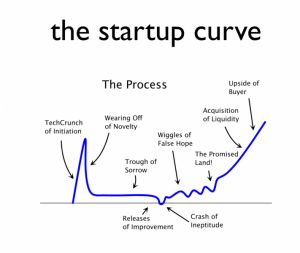— June 15, 2019
Finding the right people for leadership positions can be a difficult challenge. Relying primarily on past performance as the sole indicator of future leadership success often results in disappointment and frustration. That’s because only one-in-seven high-performers possess leadership potential.
A comprehensive approach to managing employee selection and development, a sound talent strategy focuses on hiring talented candidates and nurturing them into leaders capable of driving business success. Effective talent strategies include rigorous assessments that identify an employee’s strengths and weaknesses while also providing the development opportunities and guidance that prepares them to take on future leadership roles.
But the impact of a talent management strategy goes far beyond simply elevating the “best” candidate to a given position. When implemented effectively, it can empower organizations to make better decisions, manage change more effectively, and demonstrate more resilience in the face of challenges.
A good talent strategy can use the organization’s goals as a guiding principle for turning high-potential employees into effective agile leaders. Rather than emphasizing thinking that perpetuates the status quo, development programs should emphasize critical thinking skills that help agile leaders to make unbiased decisions and advocate for difficult change initiatives. Without these aspiring leaders in the succession pipeline, organizations will be left with candidates who excel at meeting performance expectations but lack the vision to push them to where they need to be in the future.
Cultivating the Right Culture
Elevating someone who is a poor cultural fit to a leadership position can cause employees to become alienated and disengaged. Cultural fit is important for retention as well. Cultivating potential leaders who are aligned with the company’s values creates a sense of purpose that keeps engagement high and encourages people to see one another as partners in pursuit of mutual goals.
Identifying the right cultural fit should be a priority when developing an assessment process for succession. Personality tests and situational judgment tests can help establish a comprehensive view of a person’s cultural suitability for leadership positions. A good talent strategy should also guard against the danger of a stagnating culture. When cultural fit and high agreeability become the primary emphasis in succession planning, organizations can become homogenous and allow unconscious bias to seep into the decision making process. Effective talent strategies can keep organizational culture healthy by introducing much-needed diversity of thought and experience into leadership.
Avoiding Talent Gaps
Losing key talent can be damaging to any organization. When those losses include key leadership positions, companies without a robust succession strategy can be left reeling. These sudden vacancies often have a ripple effect that disrupts the entire organization, driving down productivity, undermining engagement, and increasing uncertainty. Identifying, hiring, and training a new candidate for a position not only carries high financial costs, but it will often take several months for the new hire to meet the productivity levels expected of them. In the meantime, other people in the organization will be taking up the slack, which can have a negative impact on morale and diminish their own productivity.
A comprehensive talent development strategy that focuses on building a strong succession pipeline can help companies avoid this sort of disruption. Assessment and development of high-potential candidates is part of an ongoing process, not a sudden undertaking that only occurs when a position is available. While it’s not quite as simple as elevating the next person “in-line” for leadership, a good talent management strategy model can evaluate high-potential leaders to assess their skills and determine their readiness to take on new opportunities. In addition to measuring relevant competencies, succession planning should also think about what unique qualities a candidate could bring to a position and how those qualities might align with current organizational goals.
Developing a strong talent strategy is critical for any organization’s success. These plans can help a company plan for the future, assessing and identifying the agile leaders who can manage change effectively and respond quickly to shifting demands without compromising the day-to-day needs of the business. Working closely with talented candidates also shows employees that they have an important role to play in the organization’s future, which serves to drive engagement and minimize turnover. By building a strong succession pipeline filled with capable, “good fit” candidates, a talent strategy framework can mitigate the risks of disruption due to talent gaps and ensure the long-term cultural health of an organization.
Business & Finance Articles on Business 2 Community
(58)





